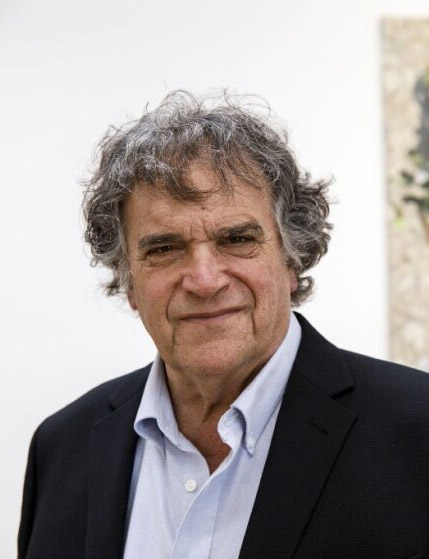BIOGRAPHY
Throughout Berlant’s multi-decade career as an artist, he has honed a complex, image-based aesthetic made through the modest materials of tin and nails. While his process of assembly resembles that of a simple carpenter, his dynamic compositions are anything but. Rather, they are psychedelic explosions that compress pattern and form into alien landscapes. Still, he approaches his process with an earnest work ethic. Berlant explains: “I love the labor and the process of making.” The nails act as a means to adhere tin to board, yet also bedazzle Berlant’s compositions like the stud work in a cowboy boot; their ornamental repetition allows for structure under the (at times) cacophonous collages.
Berlant was first drawn to printed tin signage when a shop near his studio in Los Angeles closed down in the ‘60s and left behind a discarded sign. Upon investigating, Berlant found not one, but several abandoned tin signs wedged behind the first one. Like a time capsule or an archeological site, each sign indexed to a disparate time, deckled by weathering and age into various states of rust and legibility. They soon made their way into Berlant’s studio where his curiosity led him to cut them apart and play with rearranging them in new ways. As a contempo- rary of the Cool School artists, Berlant came up with Bryce Martin, Donald Judd, Ken Price, Ed Moses, and John McCracken. As many of Berlant’s contemporaries have recently passed, he has noted the strange phenomenon of the artists’ absence, but their work living on. Over the last few years Berlant is becoming increasingly biographical, using his work as a way to cite a certain time and place, and his role therein. Family members, including his wife Helen and daughter Kate, have become subjects in Berlant’s work—this turn inward is perhaps an e ort to memorialize immediate experiences and relationships, so they, too, might live on well into the future. Often less distorted or worked over, the portraits of family members embody a notable sincerity.
While a notable artist hailing from the legendary L.A. years of Bob’s Beanery and The Cool School, Berlant’s recent oeuvre collapses the artist’s multifaceted interests, exposing an autobiographical record keeping. Art critic David Pagel describes the curiosity in his work as “…profound and infectious. Tony Berlant is living proof that form matters.”

